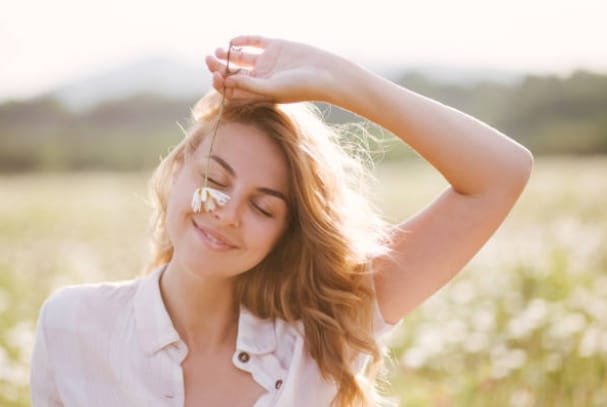How Do We Appreciate Beauty
One Of The Most Complex Processes In Nature We all know that beauty is subjective. We have different tastes in music, visual art, and even people. This is great because it allows for diversity in expression but also guarantees appreciation. Through observation and contemplation, we came to the conclusion that there are some rules regarding aesthetics that are pretty much universal.
Vibrant colors, symmetry, certain patterns, and proportions are appreciated by pretty much every species. Moreover, the arrangement of flower petals or the colors of a peacock’s feathers can be seen as nature’s idea of beauty which is why most of us like them. Even though there are some guidelines regarding aesthetics, like these ones, for example, the subject in its entirety is much more complicated.
We still don’t fully understand how we decide what is pretty and what isn’t. We also have trouble explaining why our tastes are often very different, even if we grew up in almost identical environments. Beauty has baffled the minds of scientists for centuries and continues to do so, and this is precisely why we decided to dedicate an article on this topic!
Let’s learn!
What Is Happening Inside The Brain?
Evaluating certain things as beautiful is a process that happens exclusively in our heads. Chemically speaking, this process takes the form of physical pleasure because of the specific chemicals our brain emits when we see something beautiful. But the more interesting question is where the processes connected with aesthetic appreciation happen.
The main part of the brain responsible for this evaluation is the anterior insula – one of the deepest folds of the cerebral cortex. This was an unexpected discovery when it happened because this part of the brain is usually used for the negative evaluation of objects. Currently, scientists can’t prove why this is the section of our brain used for appreciating beauty.
However, there is one sound theory.
It is basically the idea that earlier humans used this part of their brains to determine if certain foods were good or bad for them, but as they started to create art, they effectively made the same judgment about what they created as they did for food and shelter.
Hence, this is a proposed explanation of the reason why we still use the insula when we evaluate paintings or music.
Pretty cool stuff, huh?
When it comes to faces, however, things get complicated. More than one section is activated when determining if a person is attractive to us. An area called the fusiform gyrus, which is specially tuned to processing faces, is the one which is mainly active.
An adjacent one is also used, called the lateral occipital complex, which focuses on objects. These two small pieces of our brains are the ones responsible for our opinion on whether an individual is beautiful.
Attractive faces also activate our reward and pleasure centers which are located in the front and middle part of the brain.
Beauty & Evolution
The most supported hypothesis is that our sense of beauty has evolved consequently from our need to evaluate objects that are biologically important. The theory is based on the fact that the parts of the brain we use to appreciate beauty are the same ones as the ones we use to understand if something is healthy for us or not (like certain kinds of foods and suitable partners, for example).
Evolutionarily speaking, we understand that beautiful things are also healthy. Think of fruits and vegetables, for example. If they’re proportionate and have vibrant colors, they are likely full of nutrients. The same applies to nature – if a tree is big and symmetrical, its wood can likely be used to make a shelter.
Furthermore, we deem certain facial features as universally beautiful because, from an evolutionary standpoint, that is evidence that our potential partner is healthy. These features are facial symmetry, skin homogeneity, and a healthy body structure. Nowadays, what we see as beautiful is shaped not only because of those qualities.
Our brains take into consideration our environment and past experiences, as well as things such as social media standards.
What About The Skills We Use?
It’s not easy to determine what is beautiful, but it sure is fun. Perception (used for appreciating things we deem as beautiful) and pattern-finding have to be trained like any other skill. Similar to how children are fascinated by simple colored toys, as we grow older, we are fascinated by more complex shapes because we have developed this skill and want a challenge.
The pleasure in bettering perceptual skills, especially when performing, comes when skill matches aspiration. The process itself is often seen by the brain as difficult, but when we achieve our goals, we feel so satisfied that we justify the stress we have been through.
Both consumers and creators take joy in the process.
They also constantly set the bar for others higher through positive or negative feedback. Creators want to impress and have their skills rightfully appreciated, while consumers develop higher expectations after each positive change.
What Is Deemed As Universally Beautiful In People?
Although beauty is subjective, there are some elements that all of us find attractive.
One of them is symmetry.
This is because our brains connect it with health which is, in turn, beneficial from an evolutionary standpoint. More importantly, though, asymmetry in pretty much all species is synonymous with some sort of disease or unique condition. This is why most of the celebrities who are deemed extremely beautiful have very symmetrical facial features.
In opposition to this, however, another factor we humans find attractive is ethnic diversity. We usually find people from mixed races pretty because in our subconscious this means they have more adaptability than an average person. The different genes are representative of the capability to survive in different environments and provide a bigger pool of positive qualities.
Why Do We Enjoy Beauty?
This is a complicated process, and we are not yet sure why we enjoy the beauty for the sake of it.
Aesthetic pleasure is activity-focused. Think of it like cuddling – we don’t have a physical need for it, and we reach a point in which we no longer want to stay cuddled. However, all of us enjoy it from time to time, and it makes us happy. Beauty in this sense is not end-directed like hunger is, for example.
It doesn’t bring us anything essential for our survival. It doesn’t focus on an end goal. Aesthetic pleasure is simply the pleasure of contemplating and appreciating something. We look at beautiful landscapes not because we need to, but because while doing so, we let our brains wander. Psychologically speaking, when we focus on pleasurable activities such as admiring beauty, our worries seem to fade.
From this perspective, beauty is useful because it gives us time to rest and contemplate. It serves as a reminder that not everything in the world has to be goal-oriented.
Final Thoughts
Beauty is a complicated thing for sure. We still have trouble defining it and figuring out where exactly it comes from, but that’s why it’s so fascinating. We have a lot more to learn about it, and that knowledge will surely change some of our perceptions.
Currently, however, we still have a long way to go just to give it a precise description. This is why you can share what you find beautiful and help us understand it better. What is your take on beauty perception? Comment below!














